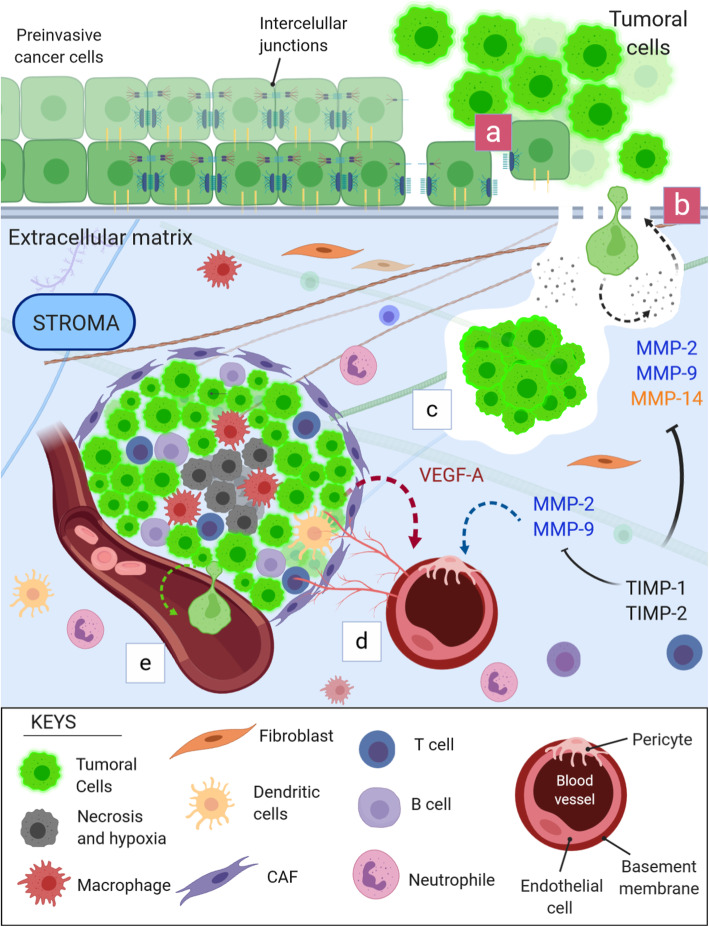Fig. 1.
MMP-2, MMP-9, MMP-14, TIMP-1, TIMP-2, and VEGF-A in the process of tumor invasion, tumor progression, angiogenesis and metastasis. a) The invasion process begins with the disruption of intracellular junctions of carcinoma cells in situ and their adherence to the basement membrane. The basement membrane is then destabilized, opening spaces that allow enzymatic action. b) Tumor cells continue the process by secreting proteolytic enzymes, such as MMP-2, MMP-9, and MMP-14, which degrade collagen and other proteins present in the basement membrane. BM degradation allows tumoral cell invasion. At the same time, stromal cells, now reactive, start to produce more extracellular matrix and stiffen collagen fibers, which facilitates cell motility. c) Once invaded, the tumor cells continue to secrete enzymes to degrade the surrounding ECM, which allows migration and tumoral enlargement. d) The tumor cells interact with the stromal cells and the extracellular matrix and form the tumor microenvironment. As the tumor grows, the innermost tumoral zone is deprived of oxygen and nutrients, developing a hypoxic and necrotic core. Tumor cells start to secrete VEGF-A in abundance to stimulate the formation of new blood vessels. MMPs, in particular MMP-9 and MMP-2, degrade the basement membrane of adjacent vessels, exposing VEGF-A receptors expressed on pericytes and endothelial cells. VEGF-A initiates the angiogenesis process for tumor survival and progression. e) Due to the rupture of the basement membrane for the formation of new vessels, similar to what initially occurs, the opening of spaces and the continuous action of the MMPs, there is a propensity for distant metastasis, since tumor cells can disseminate into the bloodstream. TIMP-1 and TIMP-2 directly inhibit MMP-2, MMP-9, and MMP-14 and are therefore related to the regulation of their activity in tissues

